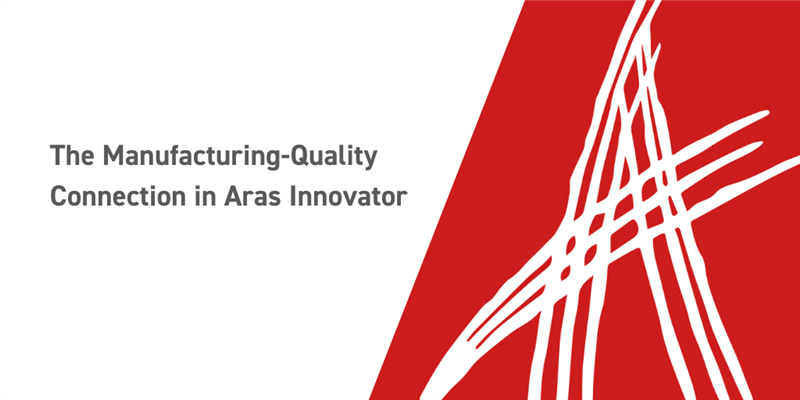Managing the impact of the manufacturing process on the quality of produced parts is critical to producing the high-quality products your teams design. That’s why standard functionality in Aras Innovator connects manufacturing process planning with process quality planning in deep, meaningful, and comprehensive ways.
Check out these connections in this brief, 4-minute video:
But why did Aras design in these connections? Let’s consider:
Five Reasons to Connect Quality and Manufacturing
1 – Ensure you build what you designed. Achieving product quality is a complex process beginning early in the product’s lifecycle with carefully considered designs, exhaustive risk analysis, and closely controlled engineering changes. But without controlling manufacturing quality, all those design efforts could be in vain.
2 – Achieve compliance through traceability. The ability to demonstrate that the product you designed is the one you built is critical to achieving compliance across a number of industry-specific ISO standards for manufacturing quality. Aras offers traceability by way of connected data with visual cues that represent each built-in connection – and the missed connections – between individual steps, tools, and other resources in the manufacturing process plan and the fields they correspond to in the process quality document.
These visual cues mean that the quality team always knows when the quality plan is out-of-synch with the manufacturing process plan, and they can easily adapt their analysis to accommodate the new information. The process quality document in Aras Innovator includes, standard, a Process Control Plan, a Process Flow Diagram, and a PFMEA—or, Process Failure Modes and Effects Analysis—which is a manufacturing risk control and mitigation methodology required under many industry standards for process quality.
3 – Address the many dimensions of process quality. In Aras Innovator, all of these methods to address process quality are connected to one another. Each one essentially represents a different view of the same quality information; so that, when one updates, they all do. This provides traceability across each of the ways companies document manufacturing process quality and compliance today. They all stay up-to-date with the manufacturing process plan, too – so that, no matter which quality document you’re working in, the connections to manufacturing processes, and their cues, like out-of-synch references, are visible and easy to manage.
4 – Don’t miss the details. With this connection established between manufacturing and quality, each view of process quality is connected down to the granular level with the manufacturing process plan. No matter which quality method you’re working in, the connection with manufacturing process steps is visible: from high-level operations, down to individual steps, and even specific tools or resources selected as reference items from the manufacturing process plan: each one is synchronized in the corresponding quality documents, ensuring traceability for compliance.
5 – Stay in sync. Whenever an operation is added to the process plan in Aras Innovator, the corresponding step is automatically generated in the process quality document. This creates the relationship between the two fields. Or, users can generate these relationships on the fly, by referencing an item in the Manufacturing Process Plan to add to the Process Quality Document manually: including process steps, parts, tools, resources, and so on. These relationships keep manufacturing and quality in sync: alerting quality when the reference field in the manufacturing process plan changes and allowing them to decide whether to sync up with the change, keep the existing data in the quality field, or view and provide input to the referenced manufacturing information.
Learn More
To explore more features of the Manufacturing Process Plan application in Aras Innovator, check out these resources:
- What’s in a Manufacturing Process Plan?
- Connecting Manufacturing Process Planning to the Digital Thread
- Harnessing Engineering Data to Create Connected Process Plans

